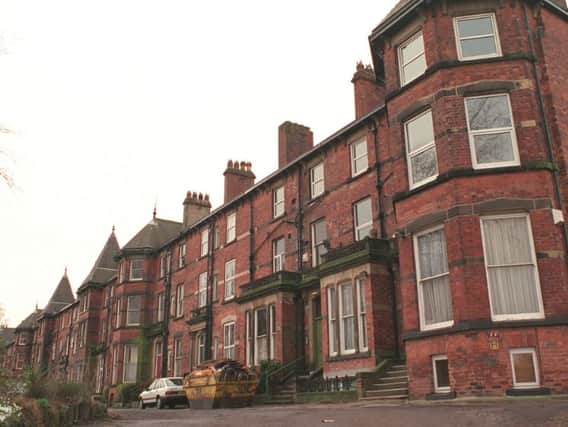The fascinating tale of the suburban Leeds home that sheltered suffragettes on the run


A century ago, it was a hotbed of revolutionary activity and played an integral role in a campaign that would change the political and social landscape of Britain.
7 Westfield Terrace was the home of Frank Rutter, a prominent art critic who had relocated to Leeds in 1912 to become curator of the city's art gallery.
Advertisement
Hide AdAdvertisement
Hide AdRutter, originally from London, was sympathetic to the aims of the women's suffrage movement that was gaining momentum at the time, and his period property became a 'safe house' for female activists playing a cat and mouse game with the police.
They would stay in his home, with its veneer of respectability, and escape to the Continent in disguise as part of elaborately-concocted ruses.
Suffragettes who had been sent to prison would often go on hunger strike in protest at their arrests, and were sent to Rutter's house to recuperate before they were well enough to be detained once again. His wife would also help to care for these women - known as 'mice' because of their attempts to evade custody.
In 1913, Rutter ended up sheltering one of the most notorious suffragette fugitives.
Advertisement
Hide AdAdvertisement
Hide AdLillian Lenton was arrested in Doncaster in 1913 on suspicion of arson. Earlier in that year, she had already successfully set fire to the Tea House at Kew Gardens in London, and been force-fed in prison.
On this occasion, she spent several days in Armley Prison, and was then released to recover her health. Police officers followed her taxi to Chapel Allerton, where the invalid was cared for by the Rutters and ate a little bread and milk.
Her fellow activists in the women's franchise movement then sprung into action to concoct a plan that would allow her to flee to Europe before she was re-arrested under the terms of the 'Cat and Mouse Act'. The Rutters did not know about the plot, and Frank was busy with his work at the gallery and with various local causes.
She was disguised as an errand boy and smuggled into a delivery van, reading a comic and eating an apple. She was taken to Harrogate and then Scarborough, and finally sailed to France in a private yacht.
Advertisement
Hide AdAdvertisement
Hide AdLenton returned to Britain, and by 1913 had been arrested again at Paddington Station in London while collecting a bicycle from the left luggage office. There followed several more arrests, imprisonments and escapes until the Women's Social and Political Union suspended their campaign on the outbreak of World War One.
During the war, Lenton served her country with distinction. She became a nurse, and served in Serbia with the Scottish Women's Hospital Unit. She was even awarded a medal by the French Red Cross.
She was unimpressed with the eventual voting rights awarded to women after the war - they had to be over 30 and a householder or the wife of one - and she did not vote until she was 37, when the suffrage age was lowered to 21.
In later life she worked for the British Embassy in Stockholm, in animal welfare and for a teaching union. She died in 1972.
Advertisement
Hide AdAdvertisement
Hide AdRutter only spent five years in Leeds, and left after becoming frustrated with local councillors' lack of enthusiasm for his plans to introduce modern collections to the gallery. His social and professional reputation had also been damaged by his involvement in the Lenton scandal, although he had always disapproved of extreme tactics by the suffragettes.
Westfield Terrace survives, although the original houses have now been converted into flats.